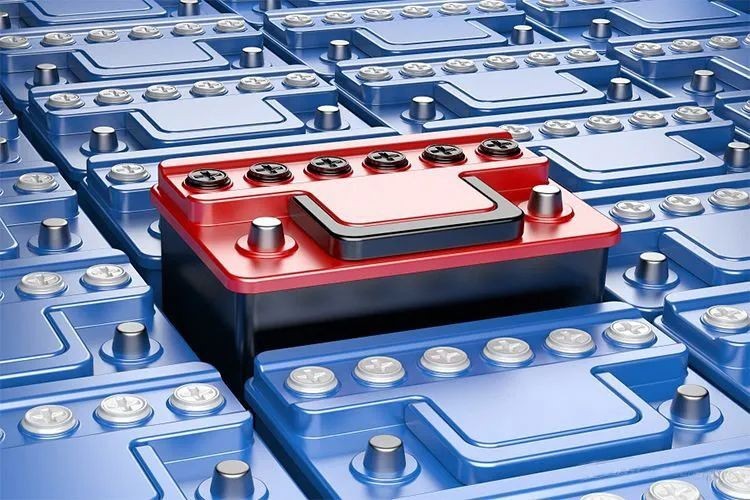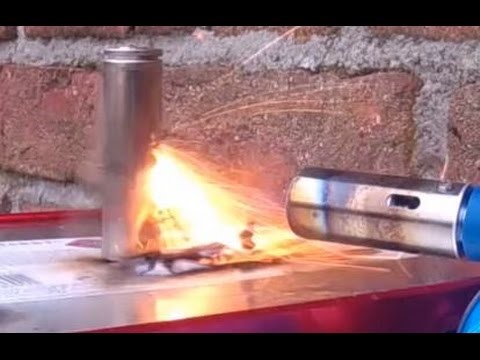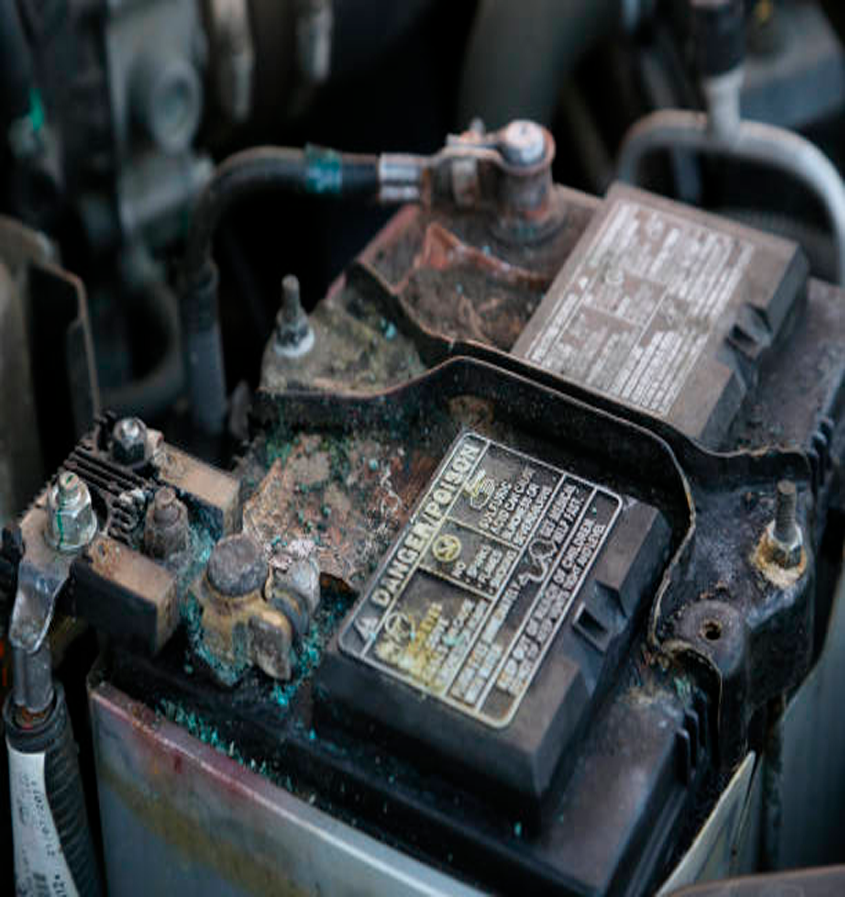Introduction
Lithium Ion battery are the very demanding type of battery used in electronic devices. They are found in cell phones, laptops, tablets, and many other devices. Recently there have been several reports of fires involving these batteries.
Lithium batteries are made to deliver high output with minimal weight. Battery components are designed to be lightweight, which translates into thin partitions between cells and a thin outer covering. The partitions or coating are fairly fragile, so they can be punctured. If the battery is damaged, a short occurs. This spark can ignite the highly reactive lithium.
Another possibility is that the battery can heat to the point of thermal runaway. Here, the heat of the contents exerts pressure on the battery, potentially producing an explosion.
Safety has always been one of the difficulties in the development of the lithium-ion battery energy storage industry. At the same time, the lack of relevant regulations has also intensified the safety development pressure of the lithium- ion battery energy storage industry.
“Generally speaking, the direct cause of fire and explosion accidents in lithium-ion batteries is the thermal runaway of the battery. Thermal runaway is caused by defects in the battery itself on the one hand, and heat release by external impact, which can also lead to thermal runaway. It is certain that improving cell consistency is an important path to ensuring the safety and reliability of battery packs.”
“At present, the domestic energy storage safety standards and corresponding specifications are still relatively lagging behind. In the event of an accident, the real cause of the accident must be found, and solutions and rectification measures must be proposed for the problem. Some of the lagging standards and specifications require relevant departments to step up research and rectification.”

A few days ago, the investigation report on the fire and explosion accident of the energy storage power station in Fengtai District, Beijing was released. The report believes that the direct cause of the fire in the south building was an internal short-circuit failure of the lithium iron phosphate battery in the west battery room, which caused the battery to run out of control and catch fire. The direct cause of the explosion in the north building was the internal short circuit failure of the single lithium iron phosphate battery in the battery room of the south building, which caused the thermal runaway of the battery and the battery module to spread and catch fire. Energy chamber and diffusion, mixed with air to form explosive gas, explosion in case of electrical sparks. The investigation lasted for half a year, and a scientific and rigorous analysis of the ins and outs of the accident was carried out and a conclusion was drawn, which has profound reference and guiding significance for the healthy and sustainable development of the industry.
On April 14 this year, the “Energy Storage International Summit and Exhibition (2021)” was grandly held at the Beijing National Convention Center. As the most authoritative industrial research report on China’s energy storage industry, “Energy
Storage Industry Research White Paper 2021″ (hereinafter referred to as the White Paper) was also publicly released at the conference. The white paper predicts that during the “14th Five-Year Plan” period, my country’s electrochemical energy storage market will officially enter the stage of large-scale development., chairman of the China Energy Research Association, said at the meeting that as an important form of energy storage, electrochemical energy storage has the advantages of good equipment mobility, fast response speed, high energy density and high cycle efficiency, accompanied by a net increase in electrochemical cost. With the development of renewable energy, electrochemical energy storage will usher in rapid development.
According to the energy conversion method, electrochemical energy storage mainly includes lithium-ion battery energy storage, lead storage battery energy storage and flow battery energy storage. Among them, lithium-ion batteries have the characteristics of good cycle characteristics and fast response speed, and are currently the main energy storage methods in electrochemical energy storage. Some industries that require high-quality and stable power supply, such as hospitals, banks, command and control centers, communication base stations, etc., mostly use lithium-ion battery energy storage as emergency UPS power supply to ensure the stability of power supply. However, lithium-ion batteries have their own shortcomings, and safety has always been one of the difficulties in the development of the lithium-ion battery energy storage industry. At the same time, the lack of relevant regulations and regulations is also aggravating the safety development pressure of the lithium-ion battery energy storage industry.
Improve battery consistency and reduce accident risk
“Generally speaking, the direct cause of fire and explosion accidents in lithium- ion batteries are the thermal runaway of the battery. On the one hand, the thermal runaway is caused by the internal defects of the cell itself, such as unbalanced cell voltage, aging or branch formation in the cell. Therefore, the BMS (battery management system – Semco Infratech) of the battery pack itself, internal structure design, cell quality, process management, etc. are all very important. On the other hand, the heat generated by external impact will also cause heat Out of control.” If Huang Feng, technical director of the New Energy Innovation Laboratory, said that for the thermal runaway of lithium-ion batteries, the current mainstream solutions in China are mainly to improve from two aspects: external protection and internal improvement. External protection mainly refers to the upgrading and improvement of the system, and internal improvement refers to improving the safety performance of the battery itself.
” Safety warning and automatic control are the two main aspects to improve battery safety. At present, most safety technologies are based on the use of various sensors to collect and analyse the link data of lithium batteries, and based on a certain digital model of operation, the collected data is collected and analysed. Conduct online analysis to determine the probability of thermal runaway risk of lithium batteries, so as to automatically trigger safety response devices and operational alarms, control the impact of thermal runaway, and minimize battery fire risks.” Huang Feng added, but fundamentally speaking, lithium-Ion battery thermal runaway is difficult to predict. The root cause of thermal runaway is the imbalance and inconsistency inside the cell, which will lead to faster decay of the battery with degraded performance, or even direct failure; some will also produce thermal runaway, combustion and explosion. This means that if every microscopic electrode material particle, separator to macroscopic pole piece, and casing package in the cell are 100% consistent, the formed battery pack will have better safety and stability. And the process of decay to short circuit will be very slow, and the voltage signal given is not obvious. Typically, an accidental battery goes into thermal runaway in just a few minutes. After the accident, the battery was almost completely destroyed, and the accident investigation was difficult, and the technicians were often unable to track it, which also made related research difficult.
” It is certain that improving battery consistency is an important way to ensure the safety and reliability of battery packs. At the same time, the development of relevant safety technologies that provide external protection can also buy valuable time for accident prevention. In terms of early warning technology, the sensor that monitors whether the battery leaks gas can give an effective warning at least 5 minutes before the battery accident; the self-poisoning technology can release chemical substances in the early stage of the battery thermal runaway, so that the internal passivation of the battery can interrupt the thermal runaway. chain to avoid accidents.” Huang Feng said.
On how to improve battery safety, senior engineer of CATL New Energy Technology Co., Ltd., particularly emphasized the life cycle of battery safety protection, “Power battery safety is a system engineering, and battery safety protection should be a full life cycle. From development and design to production and manufacturing, to after-sales service and then to recycling, there are safety risks, and we need to find ways to avoid these risks.” He proposed that at the product design level, to improve the safety threshold, the battery pack must be waterproof from the design process. , Fireproof, anti-collision, anti-high voltage leakage, and at the same time achieve high reliability. Pay attention to the quality and safety control of the manufacturing process, and pay attention to the safety of the full life cycle of the power battery. For example, in the early stage, attention should be paid to software and hardware failures and problems at the process and production level; in the middle stage, attention should be paid to accidental failures, such as cell expansion. , aging of low-voltage connectors, aging of low- voltage wiring harnesses, etc. Finally, it is necessary to strengthen after-sales maintenance, safety warning and product disposal.
In addition, the rationality of the design of the electrochemical energy storage power station is also very important. The temperature and climate around the construction site must be considered, and the installation and quality of key supporting equipment such as transformers and relays must be ensured. Only in this way can the overall safety environment of the energy storage power station be improved. Ensure the safety of lithium-ion battery energy storage. Standards and specifications keep pace with security development.
The lag of technical standards has become the main crux of the standardized development of this industry. The lithium battery energy storage industry lacks effective guidance policies and incentives, which may lead to problems such as overly simple project design, lack of authoritative and unified inspection and testing, and hidden dangers in battery safety.
“At present, the domestic energy storage safety standards and corresponding specifications are still relatively lagging behind. In the event of an accident, the real cause of the accident must be found, and solutions and rectification measures must be proposed for the problem. Some of the lagging standards and specifications require relevant departments to step up research and rectification. “Zhongguancun Energy Storage Industry Technology Executive Vice President said that from the perspective of the development of the global energy storage industry, lithium batteries are widely used in the field of power batteries, and their characteristics have been well known to the industry, and new energy storage projects around the world are basically based on lithium batteries. Mainly, the mainstream manufacturers of lithium batteries maintain a relatively low accident rate in the European and American markets. Some projects have been used safely for more than 8 years. Many valuable foreign experiences have been transformed into norms and standards. This fully shows that although lithium batteries have the risk of flammability and thermal runaway, the safety of lithium-ion battery energy storage systems can still be guaranteed through strict and effective control and raising the entry threshold from a safety perspective. Strengthening safety management is both necessary and can make the industry develop healthier.
It is understood that the current technical standards of China’s lithium-ion battery energy storage industry include national standards and industry standards, including “Design Specifications for Electrochemical Energy Storage Power Stations” (GB51048-2014), “Monitoring System and Battery Management System for Electrochemical Energy Storage Power Stations” Communication Protocol” (DL/T1989—2019), “Technical Specifications for Converters for Battery Energy Storage Power Control Systems” (NB/T31016—2019), ” Technical Specifications for Power Conversion Equipment for Optical Storage Systems” (NB/T10186—2019 ).
“Although the currently promulgated standards cover the technical requirements for the battery body, equipment technical conditions, etc., the basic technical conditions for the control and protection equipment of the energy storage power station, the operation and maintenance of the energy storage power station and the battery system, and the operating environment of the energy storage power station Requirements, fire safety standards for energy storage power stations, etc. are still lacking.” Huang Feng added, “If the lithium-ion battery energy storage industry is to develop faster, we believe that it should also focus on key issues such as battery safety and reliability. Increase research investment in technology roadmaps.”
Lithium-ion battery fire characteristics and fighting measures
Common security risks:
Generally speaking, the safety problems of lithium-ion batteries are manifested as burning or even explosion. The root cause of these problems is the thermal runaway inside the battery. In addition, lithium-ion batteries may also be affected by some external factors and have safety problems, such as overcharge, fire, extrusion, puncture, short circuit, etc.
At present, ternary lithium batteries and lithium iron phosphate batteries are the most widely used new energy vehicles in the market. According to statistics, 68% of lithium-ion battery fire accidents in electric vehicles over the years are caused by internal or external short circuits, 15% are caused by charging and discharging, 7% are caused by accidental start-up of equipment, and 10% are caused by other reasons.
From the perspective of fire causes, electrical failure and spontaneous combustion are the main causes of electric vehicle fires, while overcharge, battery cell failure, and electrical circuit short-circuit are the fundamental causes of fires.
Fire Characteristics:
Gas escape is one of the main manifestations of Li-ion battery runaway. When a lithium-ion battery catches fire, a large amount of white smoke will be rapidly ejected, and its main component is the vapor or decomposition products of the lithium battery electrolyte. In the early stage of fire, the difference in smoke colour is one of the most obvious features to distinguish lithium battery fire from common fire.
After the lithium-ion battery is thermally out of control, the decomposed combustible gas is mixed with air to form an explosive gas mixture. When encountering high-temperature particles ejected from the lithium-ion battery, deflagration will occur in the local space, resulting in frequent explosions in the early stage of the fire.

Fire-Fighting Methods:
At present, there are mainly the following methods for Li-ion battery fire-fighting. Combine the extinguishing agent with better extinguishing effect with the extinguishing agent with better cooling effect. For example, per fluoro-hexanone and fine water mist are used to extinguish the fire successively, and the excellent fire extinguishing effect of per fluoro-hexanone is used to extinguish the battery flame, and then the cooling effect of the fine water mist is used to reduce the temperature of the thermally runaway battery and the ambient temperature in time to prevent the battery from reproducing. ignition and thermal runaway spread.
Efficient fire extinguishing and cooling by intermittent spraying of fire extinguishing agent. Per fluorohexanone is used as a fire extinguishing agent. When a fire occurs, a large amount of per fluorohexanone is first sprayed to extinguish the fire to reduce the concentration of combustible gas in the module. Then, according to the temperature change, a small amount of per fluorohexanone is sprayed intermittently several times to effectively cool down and maintain the fire extinguishing concentration of per fluorohexanone in the module to prevent the battery from re-ignition.
Placing the fire suppression capsule inside the battery can also suppress the thermal runaway of the battery and extinguish the open flame. Suppression consists of per fluorohexanone, trimethyl phosphate and pentafluoro propane. Among them, per fluorohexanone is a fire extinguishing agent, trimethyl phosphate is a flame retardant, and pentafluoro propane is a driving agent. When the battery is thermally out of control, the capsule is thermally ruptured, and the driver pushes the inhibitor to the inside of the battery, extinguishing the battery fire in a short time, and inhibiting the internal reaction of the battery, thereby inhibiting the further expansion of thermal runaway, preventing the spread of thermal runaway, the spread of fire, etc. ACCIDENT. It is worth noting that after the fire is extinguished, the pressure should be released in time. When the battery is thermally out of control, a large amount of combustible and explosive gas is generated. When the battery flame is extinguished, these combustible and explosive gases still accumulate in the battery module or prefabricated cabin. Therefore, it is necessary to discharge these combustible and explosive gases in time after the battery is extinguished, reduce the pressure and concentration in the module or prefabricated cabin.
Conclusion
The risk of fire or explosion increases if the battery is exposed to hot conditions or the battery or internal component is compromised. You can lessen the risk of an accident in several ways: Avoid storing at high temperatures. Don’t keep batteries in hot vehicles. Don’t allow a blanket to cover your laptop. Don’t keep your cell phone in a warm pocket. You get the idea.
Avoid keeping all your items containing lithium-ion batteries together. When you travel, especially on a plane, you’ll have all your electronic items in one bag. This is unavoidable because the batteries have to be in your carry-on but usually, you can keep some space between battery-containing items. Although having lithium-ion batteries in close proximity does not increase the risk of a fire, if there is an accident, the other batteries can catch fire and make the situation worse.
Avoid overcharging your batteries. These batteries do not suffer “memory effect” as badly as other types of rechargeable batteries, so they can be discharged and recharged many times nearly back to their original charge. However, they do not fare well if they are completely drained before recharging or are over-charged. Car chargers are notorious for overcharging batteries. Using any charger other than the one intended for the battery can increase the risk of damage.
More Articles:
BMS Battery Management System,
Battery Electrical Performance Test,
Analysis and summary of lithium battery,
IEC Battery Safety Standard for Power Batteries,
POWER BATTERY SHELL WATERPROOF DESIGN,
BATTERY SAFETY PERFORMANCE TEST,

